Hanover Branch
Roger P. Minert, “ Hanover Branch, Hanover District,” in Under the Gun: West German and Austrian Latter-day Saints in World War II (Provo, UT: Religious Studies Center, Brigham Young University; Salt Lake City: Deseret Book, 2011), 203– 214.
Formerly the capital of the Prussian province of the same name, the city of Hanover was home to 470,950 people as World War II approached in the late summer of 1939. [1] One of the largest branches in the West German Mission was meeting at the time in rented rooms at Gellertstrasse 10. Doris Fraatz (born 1927) had this recollection of the facility:
The rooms were used as a dance school during the week. Brother and Sister Wille lived in the same building. Willy Wille was our district president at that time. It was quite a large building. Downstairs in the dance school were benches and a wardrobe. We used those rooms also. The large room of the dance school was the room in which we held our meetings. We put up single chairs for everybody to sit on. There was also a podium in the front of the room. . . . Classes also met in the living room or the bedrooms of the Wille apartment. The dance studio was on the main floor of the building. I think we even had a central heating system at that time. . . . I remember that we would meet outside in the backyard for classes in the summer. We also had a restroom inside. For Primary meetings, we met in a different home sometimes because the dance studio was closed for us during the week. There might have been one hundred and fifty people in attendance on a typical Sunday. [2]
Doris added these comments about goings-on in the meetings:
In Primary they would ask us if we knew of any poems that we could recite, and if we could, we had to do it during sacrament meeting. All the young children sat on one side of the room, based on their age either in the very front or the following rows. I remember that my mother always looked around to make sure that we were behaving. Whenever we were fidgety, my mother would wave, and as soon as she did that, we knew what she meant—we had to sit still.
| Hanover Branch [3] | 1939 |
| Elders | 12 |
| Priests | 9 |
| Teachers | 8 |
| Deacons | 12 |
| Other Adult Males | 43 |
| Adult Females | 128 |
| Male Children | 3 |
| Female Children | 11 |
| Total | 226 |
The mission directory compiled in the summer of 1939 shows a full complement of leaders. The branch president was an American missionary (Edward J. Wirthlin), but all other leaders were local Saints. [4] Apparently, all Church programs were in operation in this branch. As was common all over the mission, well over half the branch membership were females over twelve years of age.
Fig. 1. The Hanover Branch in about 1933.
The schedule of meetings suggests that the Hanover Branch members saw each other several times each week. The Sunday School met at 10:00 a.m., and sacrament meeting began at 7:00 p.m. Because of the central location of the meeting rooms, most members went home for dinner between Sunday meetings, then returned in the evening. Mutual was held on Tuesdays at 8:00 p.m., Primary on Wednesdays at 4:00 p.m., and Relief Society on Thursdays at 8:00 p.m.
Doris Fraatz recalled walking the two miles from her home on Wörthstrasse to the church. After Sunday School, the family went home for dinner, then returned for sacrament meeting in the evening. This meant about eight miles (about two hours) of walking each Sunday, which was quite common for members of the Church in that large city. [5]
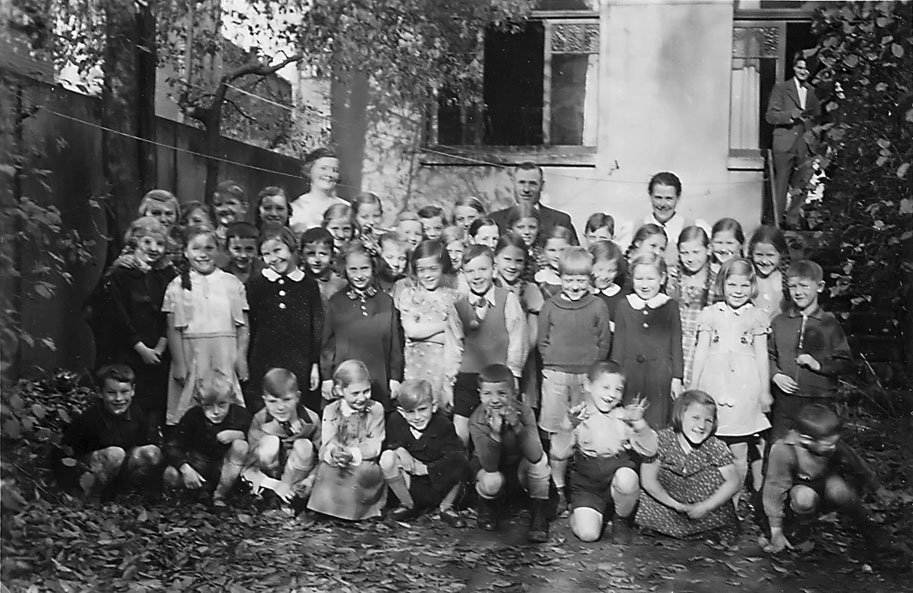 Fig. 1. The Hanover Branch Sunday School children in the summer of 1938. Several of the children were not members. (H. Reschke)
Fig. 1. The Hanover Branch Sunday School children in the summer of 1938. Several of the children were not members. (H. Reschke)
Following the evacuation of the American missionaries from Germany on August 25, 1939, Hans Bahe was called to be the president of the Hanover Branch with Stanislaus Kubiak and Richard Krafft as his counselors. [6] A few weeks later, mission supervisor Friedrich Biehl visited the branch along with three district presidents. [7] The life of the branch continued without substantial disturbances through 1939, and sacrament meeting attendance averaged forty-two persons. The average declined to about thirty-six attendees for 1940 and thirty-four in 1941.
Doris Fraatz completed public schooling at age fourteen and could have continued, but the advanced school was too far from home. In Hanover, she worked under the Pflichtjahr program, serving the nation for one year. As she recalled, “The family I worked for owned a radio store, and they had two children. I was very fortunate to be able to work for them. They also did not live very far away from us, so I was able to go home after work. [At that time] I was the Sunday School teacher for the eight-year-old children in our branch.” When the service year ended, she found employment with the local Continental Tire Company, a job that would last until the last few weeks of the war.
Max Reschke was not a follower of Adolf Hitler. His daughter, Annegret (born 1936), recalled once seeing Hitler drive by in a parade and hearing her father say, “I will never support that man!” Having been wounded during World War I, Max was fortunate to be exempt from the draft during the next war. He was also a director in a pharmaceutical company, an industry quite indispensible to the war effort. The family was pleased to have their father in town during the entire war. [8] Brother Reschke’s life was, however, not without challenges; he spent some time in a Gestapo camp for hiding a Jewish friend in his home. [9]
President Bahe was drafted by the Wehrmacht in January 1942, which necessitated a change in branch leadership. The new presidency consisted of Richard Krafft, Stanislaus Kubiak, and Karl Blombach. [10]
With more than two hundred members, the Hanover Branch was in a position to offer support for smaller branches nearby. On several occasions before the war and whenever possible during the first few years of the war, Saints from Hanover traveled to rural areas to enjoy walks, picnics, and other activities. For example, on the Monday after Easter in 1942, thirty members of the Hanover Relief Society traveled west to Stadthagen (Bielefeld District) to present a program commemorating the centennial of the Relief Society. [11]
The Hanover Branch was confronted with bad news in April 1942, when their rental contract at Gellertstrasse 10 was canceled. Fortunately the branch leaders were able to find a new place to meet about one mile to the northwest, namely in the Fischer Gesellschaftshaus at Weissekreuzstrasse 10. That building was less than one mile from the center of town and thus a good location for most of the members. [12] However, the Fischer building was likely no longer available that fall, because the general minutes report meetings being held in the homes of various members around town. Attendance dropped to about twenty-five persons in those months.
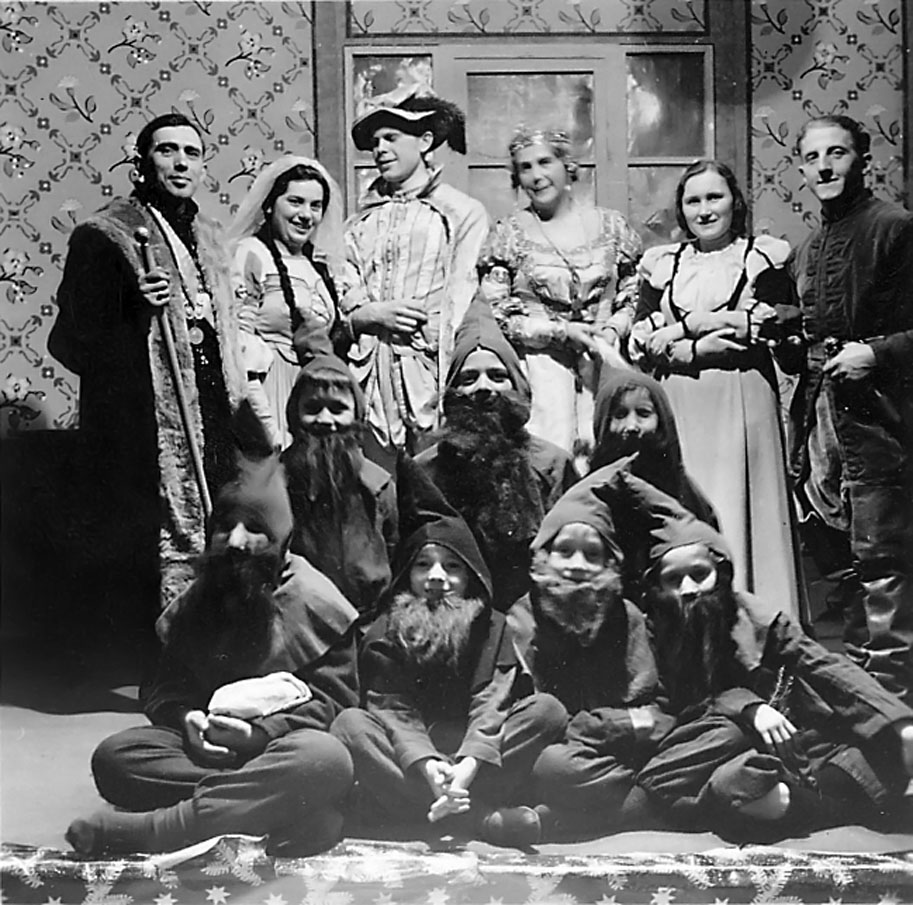 Fig. 2. The branch performed Snow White in 1938. (H. Reschke)
Fig. 2. The branch performed Snow White in 1938. (H. Reschke)
Being a child during the war was not always easy. Nevertheless, German children were like their counterparts in other nations at war when it came to making their own lives more enjoyable. The following is from the recollections of Annegret Reschke: “Toys, the kind one would buy in a store, were rare because few were available. Yet our imaginations knew no bounds. We would fashion dollhouses out of old boxes, and paper dolls were cut from old magazines. Our childhood was different but happy nonetheless, because we were children—resilient and optimistic.” [13]
Life became more difficult for Annegret when school began. When she was asked to introduce herself and identify her religious affiliation on the first day, she decided to mention the name “Mormons” instead of the full name of her church. Unfortunately, the term Mormonen sounded to the other children like Mongolen (Mongolians), and a wave of mockery met Annegret’s ears. At that moment, a very kind teacher stepped forward to correct the misunderstanding. As Annegret recalled, “She asked me to come to the front of the room and sit in her chair. Then she directed each child to come forward, shake my hand, and apologize for calling me a Mongole. I have never forgotten her kindness.” [14]
Anton Huck, first counselor to mission supervisor Christian Heck, visited the branch in May 1942. Such visitors were welcome throughout the mission, but on this occasion it may have been requested by the branch president. The branch general minutes indicate that President Huck called three sisters to repentance. He was assisted in this difficult task by district president Hermann Walter Pohlsander and branch president Richard Krafft. The minutes do not report the results of the encounter, but the recorder ended his account of the affair with this sentence: “May the heavens be merciful to these three unteachable and errant sisters!” [15]
Throughout Germany, LDS branches had hosted a wide variety of cultural programs since the early 1930s. Many such programs could no longer be offered once the war started, but the minutes of the Hanover Branch include reports of two Wunschkonzerte(“concerts by request”). On November 28, 1942, a concert was presented in Haus der Väter and attended by 116 persons (“including several children”). The report does not indicate what was presented, but the review was enthusiastic: “The Spirit of the Lord was in attendance to a great degree and the attending friends expressed their gratitude many times.” Visitors came from as far away as Goslar (the Horn family). [16]
The Saints in Hanover must have felt like vagabonds when they were required to move again in December 1942. The new location for their meetings was Markstrasse 64, just one block from the city hall. Elder Pohlsander presided over the first meeting at that location and offered a dedicatory prayer for the facility. Two weeks later, the branch held a Christmas celebration that was enjoyed by thirty persons. [17] Despite the many changes of venue for meetings in 1942 and the holding of some meetings in families’ apartments, attendance in sacrament meetings averaged thirty-five persons.
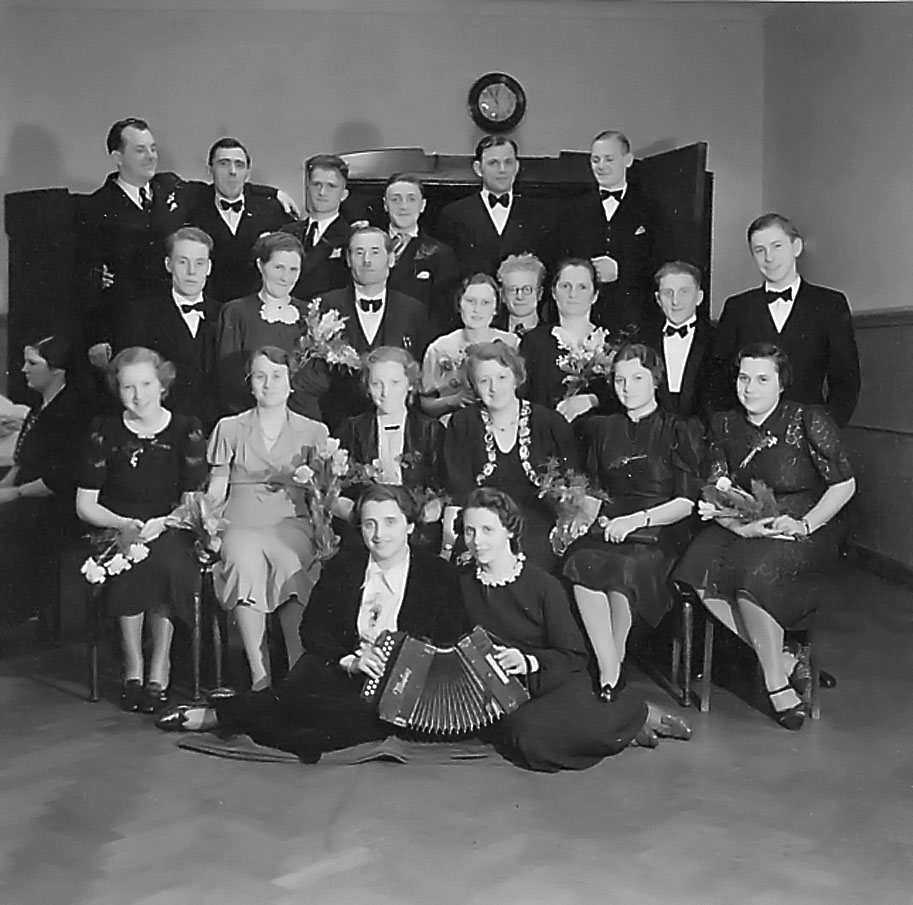 Fig. 3. The M-Men and Gleaners of the Hanover Branch. (H. Reschke)
Fig. 3. The M-Men and Gleaners of the Hanover Branch. (H. Reschke)
During the summer of 1943, Doris Fraatz and her family spent substantial time at their tiny garden property at the outskirts of town. On one occasion, the air-raid sirens began to wail and there was not time to reach the bunkers. According to Doris, “While lying on the floor of our little cabin, I heard my father cry out, ‘They got me!’ I remember my mother repeatedly asking: ‘Papa, are you still alive?’ The cigarette factory nearby was burning—we could see it and hear it. My father had gotten a piece of shrapnel in his chest. It went through the cabin walls, but what was a blessing—my father wore suspenders that day.”
As the Allied air war increased in intensity, the city of Hanover became a favorite target. The first mention of air raids in the branch general minutes is a positive note written after the attack on July 26, 1943: “The city of Hanover was punished by an air raid, but our meeting rooms at Marktstrasse 64 were spared any damage.” [18] Unfortunately, time ran out for the building just three months later, as we read:
October 10, 1943: No Sunday School or sacrament meeting was held today because our meetinghouse was totally destroyed in an air raid during the night of October 8–9. . . . So far none of the members of the Church of Jesus Christ of Latter-day Saints has been killed. However, some have lost everything and others have suffered lesser damages. The Lord, our Heavenly Father, has been merciful to His children. So far, he has sent His protecting angel to watch over us. The Lord has heard the prayers of His children. [19]
Hans Bahe was one of the many LDS men who had to leave a wife and little children to answer the call of the Wehrmacht. His wife, Margaretha, cared for her two daughters, Erika (born 1937) and Sylvia (born 1938), in a Hanover that was beginning to unravel. Sylvia recalled that they became so accustomed to the air raids that her mother could hear the planes approaching even before the alarms sounded. “We didn’t even get undressed [to go to bed] anymore. We just stayed in our clothes, so we were the first ones to get to the shelter downstairs in our basement.” [20] Eventually, the Bahe apartment was partially burned, and Sister Bahe and her daughters were taken to the town of Holtensen near Göttingen. They would be isolated from the Church for the rest of the war.
It may be that the spirit of the Saints in Hanover was suffering slightly in November 1943, because the general minutes indicate that President Pohlsander felt it necessary to encourage them to stop criticizing and judging. “He told the members to use their agency for good and to merit eternal exaltation.” At the same time, some members were doing very well, such as Sister Helena Grahn, whose husband, Albert, had been a friend of the Church for years. He spoke in a testimony meeting, thanking God for saving him and his family from the air raids and expressing the desire to be baptized as soon as possible. [21]
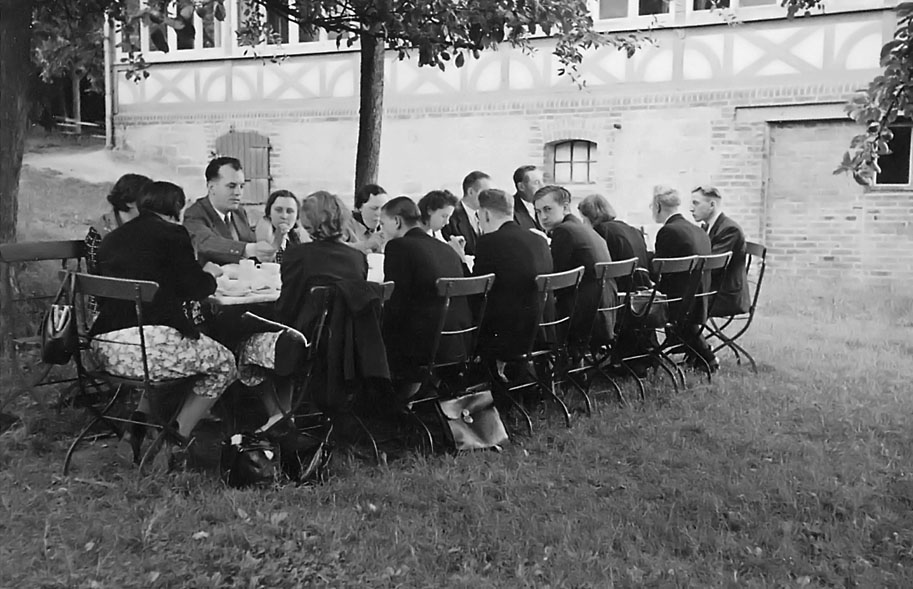 Fig. 4. A branch picnic in the summer of 1939. (H. Reschke)
Fig. 4. A branch picnic in the summer of 1939. (H. Reschke)
The bad news increased with the air raids of late 1943. The following lost everything in the final days of November: the Kubiak, Wille, and Böker families, as well as Sister Grahn and Sister Barthelt. The Liebig family and Sister Stockhausen suffered damage to their homes. [22] Despite the challenges of the time, the average sacrament meeting attendance remained at about thirty-four persons for the year 1943.
A new home was found for the branch at Volgersweg 54 in downtown Hanover. The building had been rented for a district conference on March 5, 1944, and by April an ongoing contract had been negotiated. The spirit of permanence was again felt as evidenced by the fact that district president Pohlsander pronounced a dedicatory prayer in the presence of thirty-eight persons. In a unique entry, the clerk indicated that President Pohlsander took the opportunity that day to convey greetings from the leadership of the East and West German Missions, as well as from Denmark and Switzerland. He also spoke of a message received from Christian Heck, the former West German Mission supervisor then serving on the Eastern Front. [23]
The following recollection of Doris Fraatz seems to best fit the rooms at Volgersweg:
I remember that we also met in a cheap restaurant for a while as a branch. The smell was terrible, and the brethren had to go before the meetings to clean up so that we could hold the meetings there. It smelled like beer every time. This restaurant was in the city center, and we went there after we lost our rooms in the Gellertstrasse.
At age seventeen in 1944, Doris might have been hoping for a more exciting social life, but this was not the case, as she recounted:
We could not really have fun as children or teenagers in the war. The bombings were constant. Dancing and dating were not our regular interests, but the districts and branches made sure that the young people had something they could do together. . . . All the young boys were gone and had to serve in the war. What social life I had was connected with the Church.
In the village of Holtensen near Göttingen, Margaretha Bahe and her daughters lived in a few spare rooms on a farm. According to her eldest daughter, Erika, Sister Bahe worked in a dairy; she printed the wrapping papers for butter. The farmers resented the presence of the city folks and did not do any more for them than necessary. Margaretha had no way to get to church meetings in Göttingen (just a few miles away), so she held a Sunday School with her little girls each week. As Erika recalled, “We pretty much followed the pattern of the Church, except that we didn’t have the sacrament or the priesthood. We read from the Book of Mormon, and we sang the hymns. We were a very musical family.” [24]
Everyday life for the residents of Germany’s larger cities was becoming increasingly challenging. Between air-raid alarms, they were struggling to attend school and get in a full workday, as well as collect enough food to eat from various small stores. Horst Reschke recalled clearly some of the problems with food:
[Storing food] was called hoarding and was forbidden. But we became adept at scrounging for food and fuel. We would follow a horse-drawn wagon loaded with sugar beets. The cobblestone road bounced some of the sugar beets off the wagon. We took them home to boil and make syrup to be used instead of sugar. We also swept up horse manure as fertilizer in our garden. A family member who worked for the potato authority provided improved access to that precious commodity. My mother became an expert in the many ways in which potatoes could be served, including fried in Postum when fat was lacking. [25]
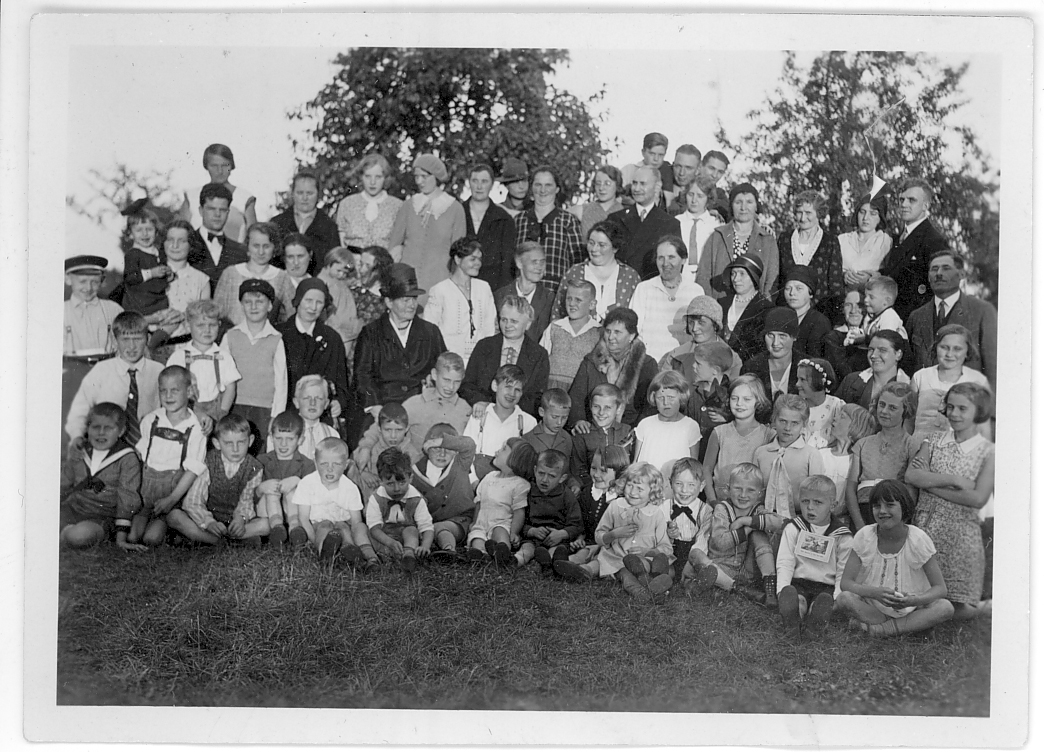 Fig. 5. Hanover Branch when the war began. (H. Reschke)
Fig. 5. Hanover Branch when the war began. (H. Reschke)
Horst’s sister Annegret added these comments regarding food:
We would send the first person to the bakery at 4:00 a.m. He would wait until the next person came. If you weren’t in line by 8:00 a.m., you got bread that wasn’t even made out of flour. [26] Bread was supposed to be rationed, but it wasn’t. They followed the rules when it came to meat though. We rarely ever got butter. For milk, we had to go to a different place, and it was like skim milk. In one air raid, the water line was damaged, so we didn’t have water supply for a number of weeks. Every day, there would be a big water truck where we filled up our buckets. We were very frugal with how we washed our hands or flushed the toilet. This went on until they fixed the water line. The ration cards would not guarantee us anything. [27]
By the fall of 1944, the schools in Hanover were in such bad condition that the three Reschke children were sent to different cities to schools still functioning: Horst to Hildesheim (eighteen miles away), Dieter to Ronnenberg (six miles), and Annegret to Sarstedt (fourteen miles). All three were on their way just after 6:00 a.m. each school day. The trip was difficult enough (especially after a night interrupted by air-raid alarms or attacks) but was made even worse when the commuter trains they rode were attacked by British and American dive-bombers (who by then enjoyed total air superiority over Germany). On one occasion, an attack came and the driver ordered everyone to get out and go to a shelter down the hill a few yards. As the last one out, Annegret found that the shelter door was slammed shut just before she got there. When she desperately pounded on the door, the shelter official opened it—not to let her in, but to let her best friend, Inge, out. “Now there we were, two frightened, little girls, exposed to the enemy. Instinctively, we scrambled back up the embankment and into the streetcar to at least have some cover.” [28] On the floor, they rolled from side to side depending on the direction from which the planes attacked. They survived the experience unscathed.
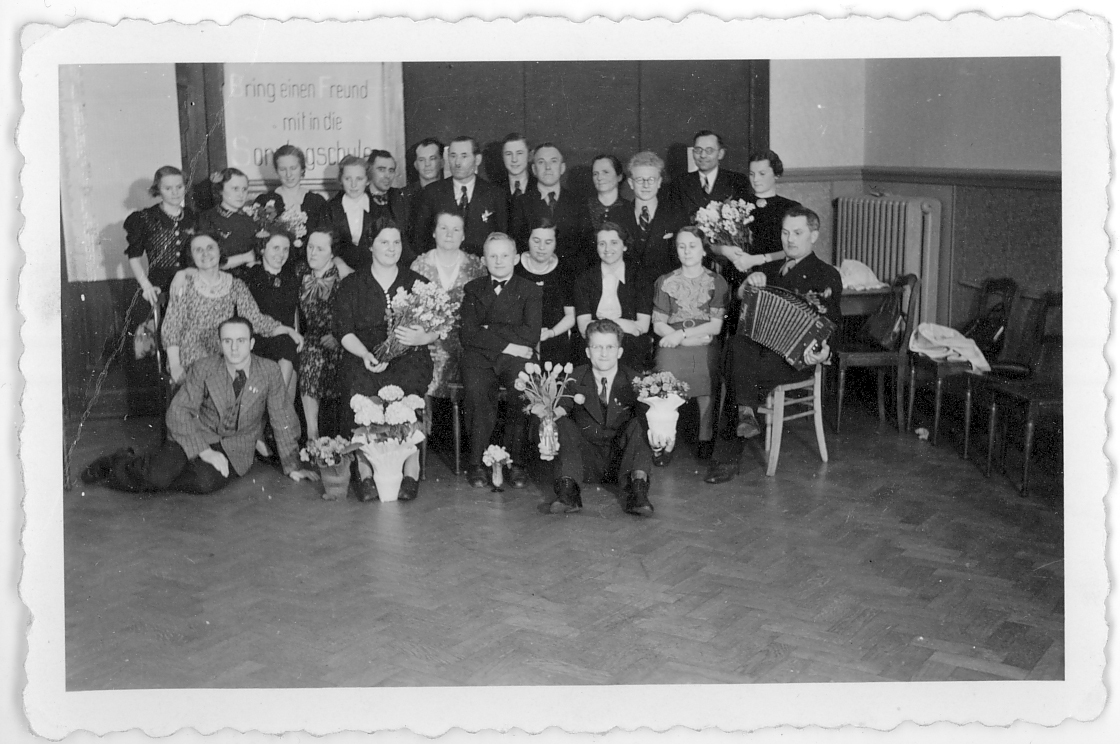 Fig. 6. The Hanover Branch Sunday School. The slogan reads, “Bring a friend to Sunday School!” (H. Reschke)
Fig. 6. The Hanover Branch Sunday School. The slogan reads, “Bring a friend to Sunday School!” (H. Reschke)
Not only was she living in a strange village without her husband, but Margaretha Bahe also gave birth in Holtensen to her third daughter, Ilona, in 1944. It was a difficult exile, and the approaching Christmas could have been a dismal experience for the Bahe family. Erika recalled that her mother was determined to observe some of the customs of the season and one day walked to the city of Göttingen on her errand of mercy:
She went from store to store trying to procure some ingredients to make cookies, and everybody would shake their heads and say, “No, we can’t help you.” And then finally she turned back and passed a Catholic church, and she had taken the stroller with the idea that if she got too tired, she could lean on it when she walked and hopefully find some foodstuff. She rested right at the side of the church, and she started to sob and prayed, “[Lord], I’m not even going to have the makings for cookies to celebrate your birth.” And within minutes, a priest came out of the church, and he looked at her and said, “My child, why are you crying?” And she told him her plight, and he said, “Wait just a minute.” He disappeared for what seemed like an eternity, and finally he came back with a box, and in that box he had some sacrament wafers. He said, “I don’t know what you can do with them, but I’d like you to have them.” And so he gave her the box, and she put it in the stroller and walked home. Somewhere along the way, somebody else stopped to talk to her. It was obvious she had been crying, and she told that person what had happened, and he said, “Wait just a minute.” And he went into a store and came back with two pounds of powdered sugar. Mom just cried and cried, and she said, “The Lord has heard my prayer.” So anyway, she had some money, and she gave that money to the person who had given her the powdered sugar, and she walked home faster and faster. She could hardly wait. When she got home, she opened the box and discovered the sacrament wafers. She took the powdered sugar and melted it with a little bit of milk, and then she took hundreds of those real thin sacrament wafers and put sugar between each one. That was our Christmas.
Toward the end of the war, the home of Annegret Reschke’s grandparents was bombed out. She recalled the following:
I remember going with Grandma to search through the debris of their apartment house the morning after the air raid. Although I had seen many bombed-out buildings, I was still stunned to see my grandparents’ home reduced to a pile of rubble. Even though we had gone very early in the day, looters had been there even earlier. Nonetheless, we were elated when we found several of Grandma’s leather-covered, velvet-lined boxes of silverware. [29]
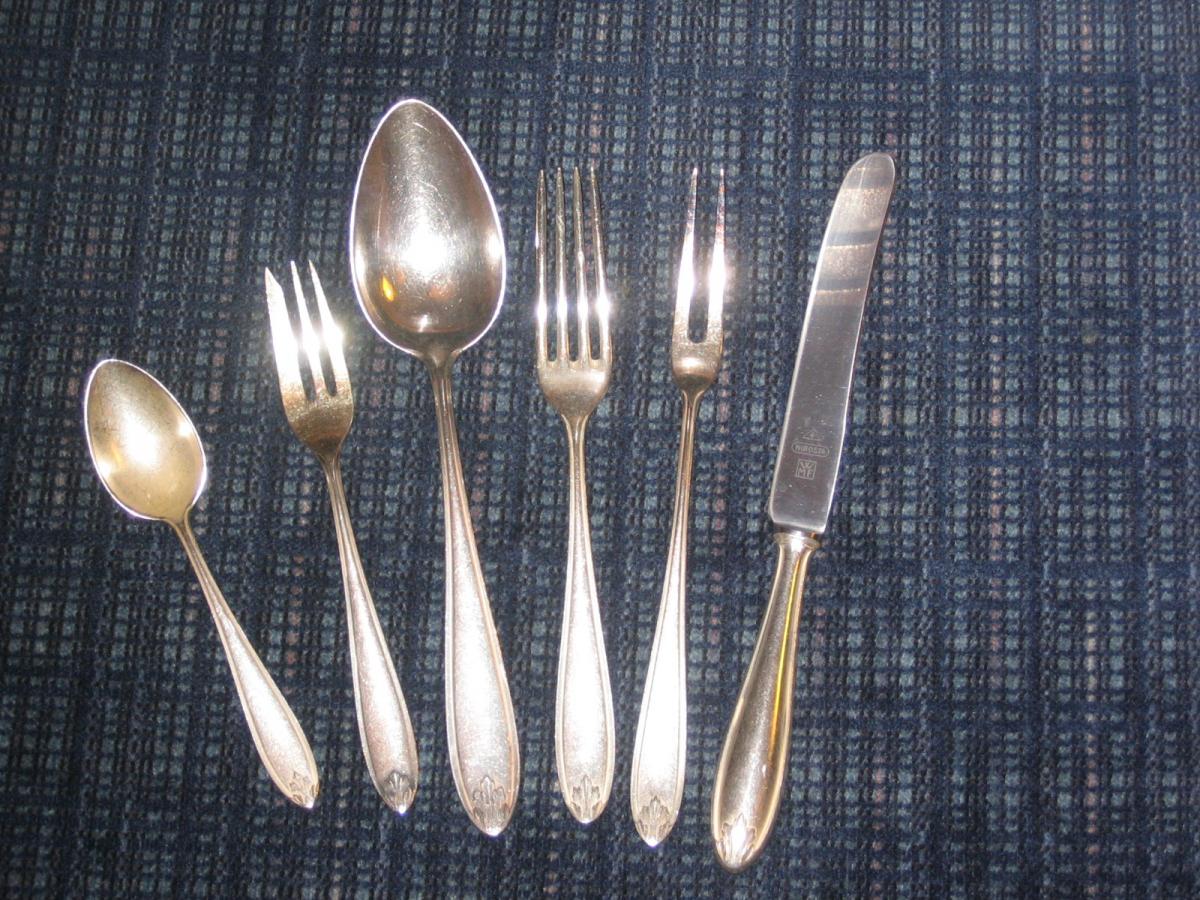 Fig. 7. Anneke Reschke’s grandmother rescued this silverware from the ruins of her home. (A. Reschke Rudolph)
Fig. 7. Anneke Reschke’s grandmother rescued this silverware from the ruins of her home. (A. Reschke Rudolph)
Apparently not all members of the Hanover Branch were having positive spiritual experiences as the war neared its end. The minutes of June 26, 1944, include the names of five sisters who officially severed their ties to the Church. The minutes also suggest that branch president Karl Blombach was influenced by the spirit of National Socialism in this statement dated July 23, 1944: “At the beginning of our sacrament meeting, branch president [Karl] Blombach said a prayer thanking the Lord for saving our Führer [Adolf Hitler] from the cowardly assassination attempt carried out against him on July 20.” [30]
By Christmas Eve 1944, Lilly Reschke and the three children had been living for two months a few miles west of Hanover, while Max Reschke stayed in town due to his employment. [31] As the sacred holiday approached, Brother Reschke picked up his family and took them to the big city. Annegret recalled the event:
Finally the day arrived when my father came to take us home. The snow had fallen and had covered all the ugliness war brings. A true feeling of Christmas came over us as we rolled toward Hanover. My heart pumped a little faster the closer we came to our home. And, finally, there it was, straight and tall as ever. As we entered, it seemed as though the rooms were a bit darker than I had remembered them, but then it was snowing outside, I reasoned, and everything had a different color. However, after a while we realized that all the glass from the windows was missing. My father had replaced it with boards and cardboard. . . . We kept our warm coats on and huddled close together around the coal stove in the kitchen. . . . Finally, Christmas Eve was here. . . . We did not expect too much in the form of presents or even a Christmas tree, because we knew . . . those things would be out of reach until after the war. . . . At Christmas time the living room at our house was always converted into the Christmas room. Here Father and Mother help Santa Claus on Christmas Eve. [32]
Life in the city of Hanover must have become nearly intolerable when the year 1945 arrived. On December 31, January 7, and January 14, no church meetings could be held due to constant air-raid alarms. Several members of the branch were among those residents whose homes were damaged or destroyed in the attacks. The minutes dated March 25 list the following families recently bombed out: Sieberling, Liebig, Schulz, Kuno, Fraatz, Wille, Wrobel, and Schmidt. [33]
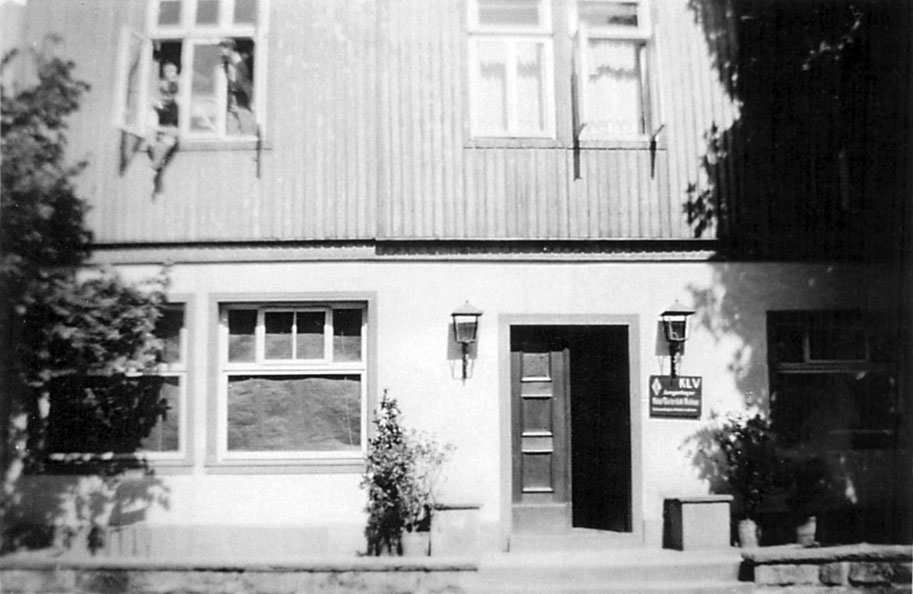 Fig. 8. Horst Reschke’s Hitler Youth Group was housed in this building in Neuhaus/
Fig. 8. Horst Reschke’s Hitler Youth Group was housed in this building in Neuhaus/
Horst Reschke recalled one of the more humorous ways to collect items needed to support daily survival:
During an air raid, . . . my mother and I came upon an elderly couple in the courtyard in the process of gathering propaganda leaflets, floating down from the sky. An American bomber had been kind enough to dump them on our property. The neighbors were aghast that we had caught them in a criminal activity. [34] They asked if we would turn them in. I told them no, if they would share the precious leaflets with us, not to enlighten us, but for a much more mundane purpose. Toilet tissues had long been unavailable for purchase. Instead, we let the daily newspaper serve dual purposes. But since the newspaper printing plant had been bombed out, the leaflets, measuring about 8 ½ x 11 inches, cut into four sections, could serve not only cerebral but also posterior functions, courtesy of the 8th U.S. Air Force. [35]
Horst mentioned some of the survival skills he learned as a young teenager—skills he hoped he would never need to apply again for as long as he lived: “I learned how to dodge bullets from a fighter plane while on a moving train, how to dig people out of a caved-in bomb shelter, and how to put out a fire caused by incendiary bombs. We learned to cope when the water and gas plants and the power stations were permanently eliminated.” [36]
Only seven members of the branch attended the sacrament meeting held in the home of the Grahn family on April 8, 1945—just two days before the American army entered the city. Each of the attendees was asked or volunteered to pray: Brother Blombach, Brother Kubiak, Brother Grahn, Brother Thews, Sister Grundlach, Sister Heim, and Sister Sagebiel. It was likely too dangerous to take children through the streets of the devastated city on that Sunday. After the meeting, Brother Grahn was ordained a teacher in the Aaronic Priesthood by Karl Blombach. [37]
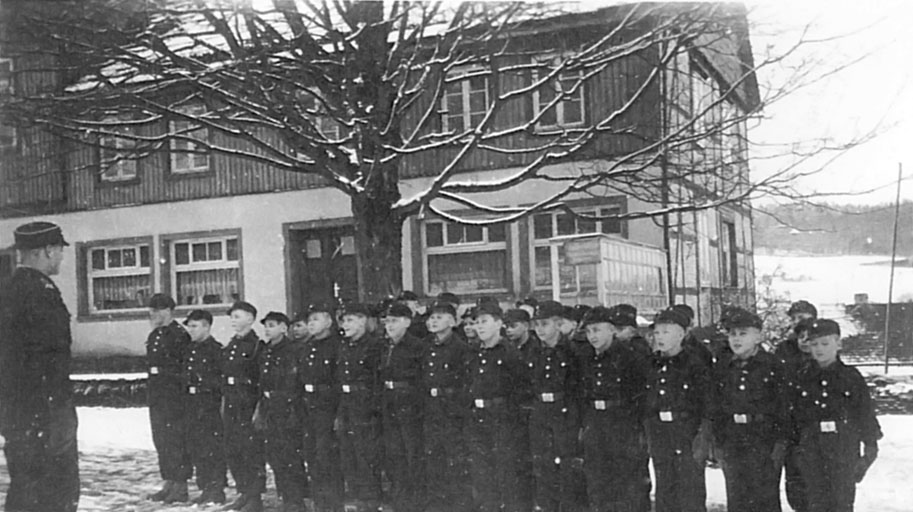
Annegret Reschke recalled the arrival of the American tanks and soldiers on April 10. While across the street in the home of her best friend, Inge, she heard the roar of the tanks approaching and dared not cross the street to her home. Then her father darted across the street between tanks and took her back into the house. She continued to watch the proceedings from the window of their apartment, including an event that left her confused. Some soldiers built a fire in the gutter and boiled a bucket full of eggs. After several soldiers took and ate perhaps a dozen eggs, the rest of that rare commodity were dumped into the street and destroyed. Max Reschke then explained to his daughter the fact that invading soldiers were not to share food with the civilians. [38]
At the war’s end, Doris Fraatz was very ill with scarlet fever, which might have been to her advantage. She was in a quarantine hospital out of town when the Allies entered Hanover and was thus quite safe—at least in some respects. While she was in the hospital, her father came to visit and brought the news that their apartment had been destroyed. The fires that burned the building to the ground had moved from the roof downward, leaving the family enough time to rescue their church books and several other important items. After finding a new apartment, they moved in with some of the furniture left to them by a grandmother who had recently passed away.
When Doris was well enough to travel, she was put on a bus and sent toward Hanover. Somewhere outside of town, the bus stopped and the very weakened seventeen-year-old was on her own to get through town on foot. Arriving at home after the curfew hour, she was fortunate to find a little girl who accepted her identification and let her into the new apartment house. The homecoming was a bit complicated, as she described in these words:
I told my mother that I was not disinfected yet from the hospital because they did not take the time to wash us [when we left]. She took a bucket and put all of my clothing in it and put me into clean clothes. Although we took careful precautions, my sister still caught scarlet fever from me. She stayed home and was not taken to a hospital.
The clerk of the Hanover Branch dutifully made his notations through the end of the war and thereafter. Although he is not identified, he was probably one of four brethren mentioned as attending the meeting on April 8. He stated that the branch rooms at Volgersweg 54 had been destroyed but gave no date for that loss. On April 15, no meeting could be held because the American occupation forces had announced a curfew, but a meeting took place on the next Sunday, again in the Grahn home. [39]
Margaretha Bahe was still in Holtensen with her three little girls when the American army approached in April 1945. According to daughter Erika,
We were scared when the American troops came in their jeeps. They sent in all the black troops first. We had never seen a black person. There were six or eight soldiers in the streets with their guns drawn. They came into the town, and that was scary. We had heard on the news that the war had ended. Now the Americans weren’t angels either, of course. It was wartime. Their deeds were pretty monstrous. They would knock on doors. They came in, looked around for weapons and anything that could be used for war purposes or what not. And they would confiscate it. The little radio we had was gone. They took it. We had a camera that was my father’s, and they took that, and of course that meant the world to us because it was Dad’s. They did not hurt us. [But] when they came to the town, they had some large trucks, they gathered up anybody suspicious or German-looking (soldiers) and they lined them up behind the barn in single file and just shot them. We little kids saw that and will never forget it.
Erika’s younger sister, Sylvia, did not recall being frightened but remembered instead the kindness the soldiers showed little children: “They got cans of fruitcake and stuff. If they didn’t want the candies, they gave them to the little kids.”
During the summer of 1945, Sister Bahe and her children were loaded onto a truck and returned to Hanover. According to Sylvia, “The city was destroyed. Everywhere you looked you saw rubble and bombed-out buildings.” Erika recalled how her mother showed her the ruins of their apartment house. They looked for surviving items, but looters had already been there. Eventually, Hans Bahe also returned to Hanover, and life began anew for the family. They immediately sought out the Saints and joined in meetings in various apartments around town.
The war years were essentially the only life young Annegret Reschke could remember. It had seemed to her that the universal motto was “Wait until the war’s over!” This applied to many of her requests but prominently to her baptism that finally took place in September 1945: “I was already nine years old by then, and, in my mind, it was high time for this very important event to take place.” [40] This new religious phase of her life would coincide with new political and cultural phases in a Germany without Hitler and National Socialism.
Looking back on her experiences in Hanover during the war, Doris Fraatz commented, “My mother and my grandmother had strong testimonies of the Church. We did not doubt what Heavenly Father could do for us—that is when you really start having faith.”
World War II had seriously (and in some cases tragically) interrupted the private lives of the Saints in the Hanover Branch, but they had worked diligently under constantly changing leadership to keep the branch alive and to worship their Father in Heaven on a consistent basis. Relatively few of them were still in the city when the war ended, but they eventually returned and gathered together again to worship and to revive their religious community.
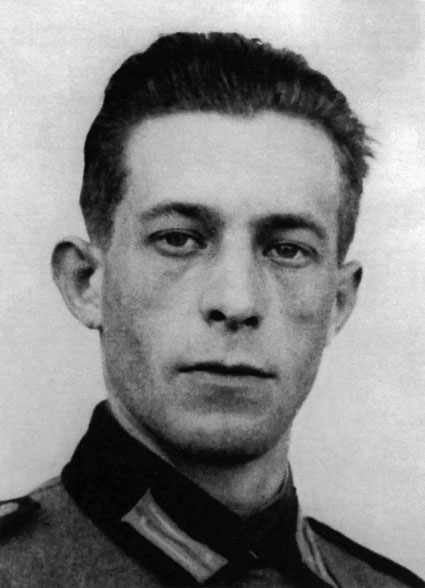 Fig. 9. Many LDS women had non-LDS husbands who were killed in the war. Heinl Hirsch of Hanover was one of those casualties. (H. Hirsch)
Fig. 9. Many LDS women had non-LDS husbands who were killed in the war. Heinl Hirsch of Hanover was one of those casualties. (H. Hirsch)
In Memoriam
The following members of the Hanover Branch did not survive World War II:
Hans Heinrich Bahe b. Kreutzriehe, Hessen-Nassau, Preussen, 26 Apr 1878; son of Johann Friedrich Bahe and Engel Marie Voelker; bp. 20 Nov 1910; conf. 20 Nov 1910; m. Hannover, Hannover, 24 Sep 1905, Doretta Engelhardt; 2 m. Hannover 3 Jan 1909, Anna Henriette Louise Engelhardt; d. heart attack Hannover 14 Jan 1942 (Celle Branch general minutes, CHL LR 1519 11, 178; nFS)
Friedrich Heinrich Fraatz b. Hannover, Hannover, 22 Jul 1922; son of Heinrich Fraatz and Elise Lina Reichmann; bp. 26 Jan 1933; conf. 26 Jan 1933; ord. deacon 20 Sep 1936; ord. teacher 6 Nov 1938; ord. priest 23 Nov 1941; ord. elder 4 Jul 1943; d. lung disease 24 Nov 1943 (FHL microfilm 68809, no. 51)
Marie Dorothee Gehrke b. Nateln, Uelzen, Hannover, 22 Sep 1861; dau. of Joachim Friedrich Ludwig Gehrke and Dorothee Elizabeth Schulze; bp. 30 Oct 1927; conf. 30 Oct 1927; m. Rosche, Hannover, 8 or 28 Nov 1884, Johann Heinrich Wilhelm Maykus; 5 children; d. old age Schliekau, Hannover, 13 May 1940 (FHL microfilm 68799, no. 14; CHL CR 375 8 2439, no. 483; FHL microfilm 245228, 1930 and 1935 censuses)
Georg Heinrich Gleim b. Reichensachsen, Eschwege, Hessen-Nassau, 12 Apr 1861; son of Conrad Gleim and Elisabeth Otto; bp. 4 Dec 1925; conf. 4 Dec 1925; ord. deacon 3 Jul 1927; ord. teacher 3 Jun 1928; ord. priest 12 Apr 1936; ord. elder 7 May 1939; m. 26 Oct 1900, Anna Wilhelmine Vogt; d. stroke 10 Jul 1942 (FHL microfilm 68809, no. 57)
Kurt Arthur Helfer b. Hannover, Hannover, 25 Aug 1913; son of Kurt Franz Helfer and Erna Lehmann; bp. 27 Jan 1923; conf. 27 Jan 1923; missing (FHL microfilm 68809, no. 74)
Paul Willi Andreas Jochims b. Hannover, Hannover, 21 Aug 1915; son of Andreas Friedrich Paul Franz Jochims and Minna Marie Henriette Julie Schlein; bp. 5 Jun 1931; conf. 5 Jun 1931; d. frostbite and kidney failure, military hospital Krakow, Poland, 16 Jul 1942 (FHL microfilm 68809, no. 208)
Emma Anna Olga Marie Martha Jürges b. Braunschweig, Braunschweig, 11 Jul 1895; dau. of Carl Jürges and Marie H. Everding; bp. 25 Mar 1907; conf. 25 Mar 1907; m. Albert Paul Klug 26 May 1917; d. pancreatitis 23 Oct or 20 Nov 1939 (FHL microfilm 68809, no. 266)
Marie Karger b. Poditau, Schlesien, 15 or 25 Feb 1867; dau. of Franz Karger and Louise Neumann; bp. 13 May 1923; conf. 13 May 1923; m. Habelschwerdt or Altweistvitz, Schlesien, 10 Sep 1888, August Jüschke; 15 children; d. old age Visselhövede, Hannover, 6 Feb 1945, bur. Visselhövede 10 Feb 1945 (FHL microfilm 68799, no. 4; CHL CR 375 8 2439, no. 593)
Eva Marie Margreta Klug b. Braunschweig, Braunschweig, 14 Oct 1923; dau. of Albert Paul Klug and Marie Martha Jürges; bp. 10 Jul 1932; conf. 10 Jul 1932; k. air raid 10 Apr 1944 (FHL microfilm 68809, no. 268)
Elsbeth Anna Krix b. Braunschweig, Braunschweig, 12 Feb 1909; dau. of Kurt Krix and Else Seyer; bp. 5 Sep 1936; conf. 5 Sep 1936; m. Friedrich Wilhelm Liebig 25 Jul 1936; d. tuberculosis 13 Jul 1941 (FHL microfilm 68809, no. 283)
August Heinrich Wilhelm Küthmann b. Barsinghausen, Hannover, Hannover, 14 Jun 1874; son of Friedrich Küthmann and Wilhelmine Adening; bp. 2 Sep 1916; conf. 3 Sep 1916; ord. deacon 16 Feb 1919; ord. teacher 10 Apr 1924; ord. priest 5 Oct 1924; ord. elder 11 Mar 1932; m. 12 Jan 1900, Maria Ebers; d. diabetes 28 Jan or 20 Feb 1940 (FHL microfilm 68809, no. 96)
Lina Marie Frieda Kreth b. Hannover, Hannover, 28 Jul 1884; dau. of Wilhelm Kreth and Karoline Dill; bp. 12 Oct 1922; conf. 12 Oct 1922; m. Wilhelm Schlüter (div.); d. stroke 12 Aug 1944 (FHL microfilm no. 68809, no. 163)
Amalia Auguste Johanna Kruhl b. Görlitz, Schlesien, 2 May 1852; dau. of Karl Kruhl and Johanna Kotz; bp. 27 Jan 1923; conf. 27 Jan 1923; m. —— Richter; d. old age 11 Mar 1944 (FHL microfilm 68809, no. 144)
Marie Auguste Henriette Sophie Lüders b. Barneberg, Neuhaldensleben, Sachsen, 20 Feb 1871; dau. of Christian Lüders and Ernstine Hase; bp. 7 Jul 1918; m. Friedrich Reichmann 9 May 1896; d. heart attack 28 Dec 1942 (FHL microfilm 68809, no. 138; Doris Fraatz Mentzel)
Minna Friederike Ernstine Lüders b. Sommerschenburg, Neuhaldensleben, Sachsen, 20 Feb 1876; dau. of Heinrich Andreas Ernst Lüders and Ernstine Hase; bp. 13 Jul 1916; conf. 13 Jul 1916; m. 15 Apr 1895, Gustav Hermann Reuter; d. stroke 1940 (FHL microfilm 68809, no. 143)
Auguste Hermine Lübke b. Argesdorf, Kloster Wennigsen, Hannover, 26 Dec 1864; dau. of Christian Friedrich Lübke and Dorothea Fündling; bp. 5 Jul 1914; conf. 5 Jul 1914; m. 21 Apr 1887, Wilhelm Heinrich Gleue; d. old age 30 Jul 1944 (FHL microfilm 68809, no. 60)
Wilhelm Karl Markmann b. Schora, Jericho, Sachsen, 11 Aug 1867; son of Christian Markmann and Sophie Fritze; bp. 9 Aug 1919; conf. 9 Aug 1919; ord. teach. 6 Jun 1920; ord. priest 6 Sep 1925; ord. elder 15 Sep 1930; d. old age 27 Jan 1942 (FHL microfilm 68809, no. 103)
Wilhelm Plinke b. Barsinghausen, Hannover, Hannover, 19 Feb 1895; son of Georg Plinke and Dorette Vogel; bp. 4 Jun 1926; conf. 4 Jun 1926; m. 6 Dec 1919, Martha Amalie Sophia Gatzenmeyer; d. lung disease 30 Nov 1942 (FHL microfilm 68809, no. 127)
Auguste Pötzold b. Kalk, Köln, Rheinprovinz, 7 Jun 1874; dau. of August Pötzold and Johanna Pöhl; bp. 15 Sep 1914; conf. 15 Sep 1914; m. Ferdinand Klages 6 May 1894; d. arteriosclerosis 2 May 1941 (FHL microfilm 68809, no. 279)
Willi Wilhelm Dietrich Schlüter b. Döhren, Hannover, Hannover, 2 Dec 1909; son of Wilhelm Schlüter and Lina Marie Frieda Kreth; bp. 29 May 1923; conf. 29 May 1923; ord. deacon 8 Sep 1929; m. 22 Jul 1933, Auguste M. W. Dohmeyer; d. injury from air raid 15 Jul 1941 (FHL microfilm 68809, no. 162)
Willhelm Johannes Schrader b. Hannover, Hannover, 22 Sep 1864; son of Carl Friedrich Wilhelm Schrader and Anna Staufenbach; bp. 17 Jun 1930; conf. 17 Jun 1930; ord. deacon 7 Jun 1931; ord. priest 19 Jun 1932; m. Gudrun Sophia Leyers; d. old age 29 Jan 1944 (FHL microfilm 68809, no. 169)
Elsa Julia Johanna Schröder b. Grevesmühlen, Mecklenburg-Schwerin, 28 May 1895; dau. of Anna Schröder; bp. 2 Feb 1930; conf. 2 Feb 1930; m. Otto Brachert 27 Oct 1923; m. 15 Oct 1937, Karl Scharnickow; d. consumption 16 Jun 1942 (FHL microfilm 68799, no. 40)
Emilie Ida Alwine Thile b. Klein Bülten, Peine, Hannover, 24 Oct 1871; dau. of Heinrich Thile and Sophie Leinemann; bp. 26 Oct 1920; conf. 26 Oct 1920; m. Karl Heinrich Wilhelm Wehrspohn 9 Aug 1894; d. heart disease 15 Dec 1941 (FHL microfilm 68809, no. 185)
Karl Borwin Warnke b. Hannover, Hannover, 14 Oct 1914; son of Gustav Warnke and Johanne Oppermann; bp. 6 Nov 1923; conf. 6 Nov 1923; d. poor circulation Groß Rosen Concentration Camp, Schlesien, 26 Apr 1942; cremated (FHL microfilm 68809, no. 182)
Christa Karola Klara Wille b. Hannover, Hannover, 2 Dec 1940; dau. of Wilhelm Heinrich Karl Wille and Elisabeth Alma Bahe; d. pneumonia 13 Dec 1940 (FHL microfilm 68809, no. 313)
Ida Henriette Rutha Wolter b. Freienwalde, Pommern, 15 May 1861; dau. of Karl Wolter and Ulrike Schulz; bp. 16 Aug 1903; conf. 16 Aug 1903; k. air raid 9 Oct 1943 (FHL microfilm 68809, no. 204)
Louise Auguste Johanne Wolter b. Freienwalde, Pommern, 31 Dec 1859; dau. of Karl Wolter and Ulrike Schulz; bp. 4 May 1912; conf. 4 May 1912; m. 15 Nov 1899, Julius Kulling; d. old age Hannover, Hannover, 15 Jun 1942 (FHL microfilm 68809 no. 95)
Heidi Wrobel b. Hannover, Hannover, 19 Jan 1942; dau. of Kurt Waldemar Wrobel and Malfriede Friederike Sophie Wille; d. measles 4 Feb 1943 (FHL microfilm 68809, no. 317)
Notes
[1] Hanover city archive.
[2] Doris Fraatz Menzel, interview by the author in German, Salt Lake City, March 21, 2009; summarized in English by Judith Sartowski.
[3] Presiding Bishopric, “Financial, Statistical, and Historical Reports of Wards, Stakes, and Missions, 1884–1955,” 257, CHL CR 4 12.
[4] West German Mission manuscript history, CHL MS 1004 2.
[5] Doris recalled a very rare situation: “My mother had a cousin who belonged to the Reorganized Church of Jesus Christ of Latter-day Saints. In fact, I even knew two members of that organization. I remember that when they came to visit us once, they started arguing a little about what we all believed in. One of the cousins had three sons who were ready to be ordained to the priesthood in their church. They also met in their branch in Hanover.”
[6] Hanover Branch general minutes, CHL LR 3594 11, 87.
[7] Ibid., 88.
[8] Annegret Reschke Rudolph, telephone interview with the author, April 1, 2009.
[9] Horst Reschke, interview by Marion Wolfert, Riverton, Utah, March 27, 2006.
[10] Hanover Branch general minutes, 117.
[11] Ibid., 120.
[12] Ibid., 120.
[13] Annegret Reschke Rudolph, personal history (unpublished); private collection.
[14] Ibid.
[15] Hanover Branch general minutes, 122.
[16] Ibid., 131.
[17] Ibid., 135.
[18] Ibid., 148.
[19] Ibid., 151.
[20] Sylvia Bahe Schwemmer, interview by the author, Salt Lake City, August 21, 2009.
[21] Hanover general minutes, 153. He kept his word and was baptized on December 19 in Celle “because all of the bathhouses in Hanover have been destroyed in the air raids,” according to the branch clerk.
[22] Ibid., 153.
[23] Ibid., 160. It appears that Elder Pohlsander was a conscientious correspondent and that letters could still be sent to such countries as Denmark and Switzerland from Germany.
[24] Erika Bahe Runnels, telephone interview with the author, March 12, 2009.
[25] Horst Reschke, “When the War Came We Were Not Prepared” (unpublished manuscript); private collection.
[26] Sawdust was a common ingredient in bread in many European countries in those days.
[27] Annegret Reschke Rudolph, interview.
[28] Annegret Reschke Rudolph, personal history.
[29] In most German cities, the crime of looting was punishable by death. Nevertheless, when the damage was so widespread, it was impossible for police to enforce the laws. In addition, it was not always easy to determine the difference between a resident and a looter. Annegret eventually inherited the silverware.
[30] Hanover Branch general minutes, 166. Count Claus Schenk von Stauffenberg had left a briefcase with a bomb in the conference room of Hitler’s Eastern Front headquarters at Rastenburg, East Prussia. The explosion killed four men but only superficially injured Hitler. All of Germany was shocked by the event, and von Stauffenberg and hundreds of other conspirators were executed. It is not clear precisely when Karl Blombach became the branch president, but he is listed as conducting sacrament meeting on many occasions beginning in August 1943, and the name Richard Krafft is seen in the minutes only on rare occasions after that date.
[31] Lilly was the second wife of Max Reschke; they had married in 1942, according to his daughter, Annegret.
[32] Annegret Reschke Rudolph, personal history. In those days, it was still the custom in most of Germany that all gifts were given on December 24. Late that afternoon, the parents closed off the living room, set up the tree, and brought out the gifts. When all was prepared, the room was opened to the children and the gifts that the Christ child or Santa Claus had brought were handed out.
[33] Hanover general minutes, 175.
[34] The leaflets were printed with anti-Nazi messages, and German citizens could be fined for even having such papers in their possession. Toward the end of the war, the leaflets announced the arrival of Allied forces and even included maps showing how the territory of Germany was to be divided up among the conquering armies.
[35] Reschke, “When the War Came.”
[36] Hanover Branch general minutes, 175.
[37] Ibid., 176.
[38] Annegret Reschke Rudolph, personal history.
[39] Hanover Branch general minutes, 176.
[40] Annegret Reschke Rudolph, personal history.
